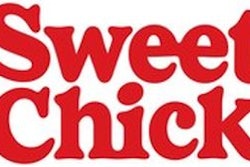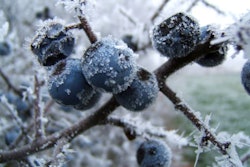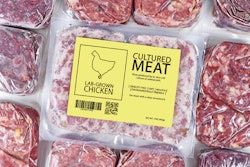
The modern broiler and broiler breeder continue to change as the demands of the market evolve. We often hear in the industry that the chicken has changed, and it has. There is more pressure than ever for the poultry industry to perform. The marketplace has many options, and the consumer wants the highest-quality product at the lowest price. At the end of the day, the feed-efficient protein source that is best at withstanding environmental challenges and production processes will be the winner!
Keeping the bird cool is a constant challenge. Broiler breeders need cooling at feeding time in the winter and all summer long to support eggshell quality and prevent heat stress, sudden death syndrome, and floor eggs. Broilers need cooling to remove metabolic heat.
Most of the chickens produced in North America are in areas with warmer outdoor temperatures because fuel heating costs are reduced due to a shorter winter season. This has created challenges in poultry house cooling. Emphasis has been placed on modernizing houses in the last 20 years, and data proves the investment in cooling flocks is paying dividends. Figure 1, created with data from Agri Stats, shows 2 solid trends over a 16-year period. The first trend is that in 1998, the time it took to produce a 5-pound broiler approached 52 days while by 2014, it averaged 41 days. The second trend is that during the hottest months (June, July and August), it took one day longer to produce a 5-pound bird. Cooling houses with improved ventilation along with genetic selection has allowed the industry to produce market weight birds almost 2 weeks faster over the 16-year period. Todays improved housing and genetic selection continue to improve broiler production in the hot summer months.
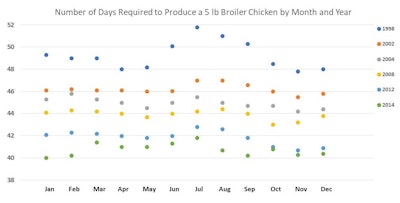
During feeding, the flocks generate heat that must be eliminated from the house. Broiler breeders consume their feed in 4 hours or less generating high levels of metabolic heat after eating. Commercial broilers also generate metabolic heat but is tempered by providing free access to feed throughout the day. To compare, the average broiler consumes 132 calories per pound of bodyweight, while the average human consumes 23 calories per pound of bodyweight.
The National Poultry Technology Center has studied the amount of heat in a poultry house and the data shows that 80% of the heat comes from metabolic heat released from the birds (Figure 2). Other heat, entering from the ceilings, curtains, lights, and walls, is minimal compared to the amount of heat produced by the flock.
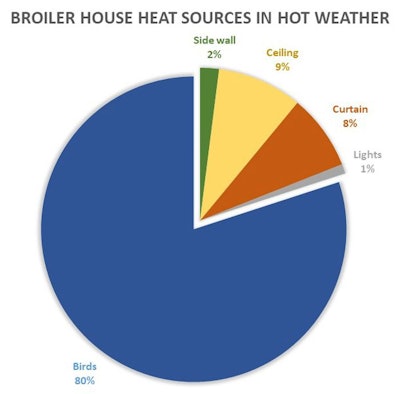
Figure 2: Sources of heat in a broiler house during hot weather. (Courtesy Cobb-Vantress)
Modern poultry houses, when designed and operated correctly, can handle the heat generated by the birds. However, unlike cooling systems in our residential homes, we set it and forget it. Evaporative cooling systems used in our poultry houses are dynamic as they have several factors that influence their cooling capacity. Direct impacts on cooling capacity and efficiency include outside temperature, humidity, moisture on the pad, and cleanliness of the pad. Of these four factors, three of them change throughout the day. Therefore, environmental controllers must analyze house data to know when to turn on, hold or turn off the evaporative system.
Considering the effectiveness of evaporative systems, some common practices to consider include:
- Outside temperature must be above 80 ˚F to run the evaporative pads.
- Humidity must be lower than 80 % to run the evaporative pads.
- All tunnel fans must be on before evaporative pads are activated.
- Excess moisture in the air negatively affects the bird’s ability to cool itself by panting.
- Run the system constantly in areas with high mineral content in the water.
- Clean pads routinely, not just when they are dirty. (Consult pad manufacturer)
Figure 3 gives a great representation of what actually occurs during the summer months. The effective temperature (temperature felt by the birds) depends on the outside temperature, humidity and cooling pad efficiency. For example, if the outside temperature is 95˚F, the humidity outside is 70% and the system is 75% efficient, then the effective temperature is 88˚F, a reduction of 7 degrees. However, if humidity is 40% then the effective temperature would be 80˚F, a 15-degree difference. Keep in mind that as the temperature rises throughout the day, the humidity decreases. It is not unusual to see a change in humidity from 60% to 40% in a 2- to 3-hour time frame. It is very important to have all your tunnel fans running before running the evaporative pad system.

Figure 3: Temperature of air cooled with an evaporative system at 2 different efficiencies and 4 different relative humidity values. (Courtesy Cobb-Vantress)
Wetting cooling pads is a very efficient and affordable way to cool a poultry house. Unfortunately, poultry growers will, too often, run their cooling systems incorrectly by running them too early and/or too late in the evening. The drawback to evaporative cooling is the amount of moisture added to the house environment. When cooling pads are operated incorrectly, litter caking occurs, which can create health and welfare issues including pododermatitis. Litter moisture levels vary depending on the depth of the litter. The deeper the litter, the more moisture it can hold. Keep in mind that the primary enemy of any poultry house is moisture. For every 2°F of temperature reduction produced by the evaporative cooling system, the relative humidity will increase approximately 4.5 %. Although cooling the house is the desired goal, care must be taken to prevent adding too much moisture to the house. Running cool cells correctly will create a comfortable environment, extend pad life, and support production and performance goals.
Chickens will remove body heat through the shanks, wattles and non-feathered areas (breast and under the wings). However, chickens can also rid excess heat by water evaporation through the respiratory tract. The bird’s ability to cool itself will depend on the amount of moisture in the air and house. Our modern controllers have the capability to monitor the relative humidity in the house. Humidistats monitor the house’s relative humidity and tell the controller to increase, decrease, or turn off the evaporative cooling. Ideally, the house environment should be maintained from 60% to 65% humidity, but during the summer months, it is a struggle to keep it below 75%.
In the coming years, our objective to feed the world with an affordable protein won’t change. However, the dynamic environmental stress, consumer demands, and bird welfare are the priorities. Providing effective, efficient cooling will allow pullet, breeder, and broiler producers to achieve their production goals.



